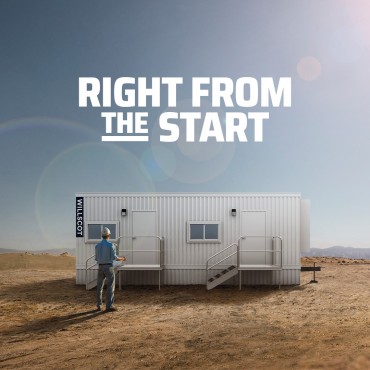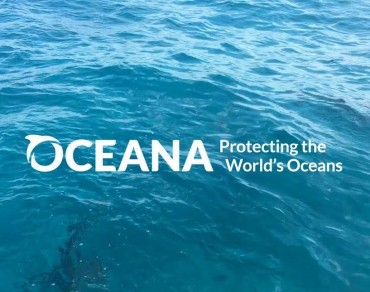NEW YORK, Oct. 10 (Korea Bizwire) — In 2015 and 2016, mergers and acquisitions accounted for more than $8 trillion of business value. But while extensive due diligence and planning is given to financials and other factors during the deal-making process, brand strategy considerations are often overlooked or only evaluated post-M&A. This is due, in part, to a lack of relevant data for analysis. Nevertheless, the success of the transaction—and the amount of value that it generates, both in the short and long term—is a result of deciding if, when, or how to transition an acquired brand.
To better equip CEOs, boards of directors, and legal and financial advisors with strategies for making acquisitions, Landor, a leading global brand strategy and design firm, conducted the first in-depth quantitative analysis of M&A activity. Leveraging machine learning, Landor analyzed the behavior of S&P Global 100 companies over the past 10 years. While 74 percent of all companies rebranded the acquired asset within the first seven years, the data reveals more nuanced approaches to rebranding and specific trends by sector.
Acquirers within an industry behave similarly
The Landor M&A Brand Study uncovered distinct patterns by industry. More than any other sector, consumer companies (defined as consumer discretionary and consumer retail) are more likely to retain their acquired brands. Just under 60 percent of consumer companies rebrand, indicating that they want to retain the equity of their acquired brands and a portfolio of brands is a model this vertical finds successful. Coca-Cola’s acquisition of the organic tea company Honest Tea is an example. The deal was completed in 2011, and the parent company has not made any significant branding changes.
The IT, financial services, health care, and energy sectors display the highest likelihood of changing an acquired brand, transitioning between 75 percent and 80 percent of acquisitions. These industries place more value on the acquirer than the acquired brand; the numbers demonstrate a propensity to start transitioning a brand as soon as the deal closes. Capital One completed its acquisition of ING Direct in February 2012 and soon after rebranded it Capital One 360. IBM has been on an acquisition spree over the past year, buying companies such as Clearleap, now known as IBM Cloud Video.
The energy and utilities sector is quickest to rebrand acquired companies, with 60 percent of brands changed within 12 months, according to the study. IT companies exhibit less urgency, transitioning half of acquired brands within the first year and 76 percent by year seven. Health care and financial services companies show similar behavior. Interestingly, telecommunications and industrial companies are slowest to change acquired brands, with a respective 8 percent and 24 percent of acquisitions transitioned within the first 12 months.
“In 2016, business leaders made thousands of decisions about what to do with acquired brands—but how do they really know which decisions are best? Our study clearly shows that different industries do different things. Being able to share quantitative trend data by sector over the last decade will finally enable CEOs, boards, and advisors to make more informed decisions about brand strategy when considering M&A,” notes Lois Jacobs, CEO of Landor. “Whether a company is deciding if it should keep or divest a brand, how quickly to transition an acquired brand, or how to preserve brand equity, overlooking strategic brand decisions during the M&A process can negatively impact brand value and leave money on the table.”
“There is no single, cookie-cutter approach to brand strategy during a merger or acquisition,” says Louis Sciullo, executive director of financial services at Landor. “The ideal approach to brand acquisition strategy comes from a thorough understanding of the unique combination of factors specific to the acquiring and target companies. Now that real data is available, we can benchmark how individual companies and sectors treat M&A brand decisions—and layer that data into custom analyses bespoke to specific companies and deals.”
Deal size, type, and volume correlate with likelihood of rebranding
Generally, the larger the transaction, the longer the transition time. Mergers of equals result in brand transitions a surprising 38 percent of the time. In theory, a merger of equals should be a simple conflation of the two existing brand names; for example, Alcatel-Lucent, DaimlerChrysler, and MillerCoors. But the fact that nearly 40 percent of mergers opt to rebrand reflects a desire to create a new, future-focused source of value—from the brand as well as the business.
A smaller deal is highly indicative of the likelihood of changing the acquired brand: 78 percent of transactions under $99 million were rebranded compared to only 46 percent of transactions over $5 billion. Highly acquisitive companies such as Alphabet and Microsoft display a greater propensity to rebrand, at a rate of more than 80 percent. Alphabet’s brand architecture strategy is particularly interesting, with Google rebranding its corporate identity to facilitate M&A activity.
Landor’s M&A database offers a range of insights
The study’s database holds information on sector and company-specific brand transition factors during acquisitions, including target geography, strategic rationale, size of deal, type of deal, number of acquisitions made by company, and timeline for brand transition if implemented.
“Our study gives CEOs, corporate strategists, and M&A advisors a quantitative benchmark for comparison,” says Sciullo. “It can help them see how competitors in their sector—and companies in other industries—have handled M&A, and which strategies have resulted in successful acquisitions. To maximize value for companies during an M&A, it’s important that brand strategy be an ingredient throughout the deal process—not an afterthought.”
For the study, Landor’s methodology leveraged machine learning and big data to analyze 10 years of M&A activity from the S&P Global 100. The index was chosen because it measures the performance of multinational, blue-chip companies of major importance in the global equity markets. More than 2,300 acquisitions were taken into account, with brand strategy insights derived from more than 120,000 sources of unstructured data, including press releases, 3,000 web documents, 5,000 financial statements, and 2,000 investor presentations. The result is a definitive benchmark of M&A activity and its impact on brands and brand integrations of the leading companies across different industries, including Alphabet, Apple, Chevron, Dow Chemical, GE, JPMorgan Chase, PepsiCo, Pfizer, Procter & Gamble, Texas Instruments, Visa, and Vodafone.
For more information, contact:
Trevor Wade
Global Marketing Director
Trevor.Wade@Landor.com
About Landor
A global leader in brand consulting and design, Landor helps clients create agile brands that thrive in today’s dynamic, disruptive marketplace.
Brand can accelerate the success of an M&A, so Landor partners closely with clients early on to ensure that brand is at the heart of integration strategies. Landor has helped companies such as Alcatel+Lucent, Alcoa+Arconic, Amoco+BP, Bayer+Covestro, DNV+GL, and Siemens+Primetals through mergers, acquisitions, and spin-offs.
Landor offers a range of M&A-specific services that include brand due diligence, brand valuation, portfolio optimization, future market modeling, and brand engagement. Our expertise also encompasses insights and analytics; strategy and positioning; brand architecture; innovation; identity; prototyping; naming and verbal identity; packaging; adaptation and implementation; environments and experiences; and new and interactive media.
Founded by Walter Landor in 1941, Landor pioneered many of the research, design, and consulting methods that are now standard in the branding industry. Today, Landor has 26 offices in 19 countries, working with a broad spectrum of world-famous brands, including Barclays, Bayer, BBC, BMW, BP, FedEx, GE, Kraft Heinz, Huawei Technologies, Marriott International, Nike, Pernod Ricard, Procter & Gamble, S&P Global, Samsung, Sony, and Taj Group.
Landor is a member of WPP, the world’s largest marketing and communications firm. For more information, please visit Landor.com and follow Landor on LinkedIn, Facebook, Twitter, and Instagram.
An infographic accompanying this announcement is available at http://www.globenewswire.com/NewsRoom/AttachmentNg/3f5ace4b-13c5-461b-afff-24202c7e0ebc
Source: Landor via GLOBE NEWSWIRE








